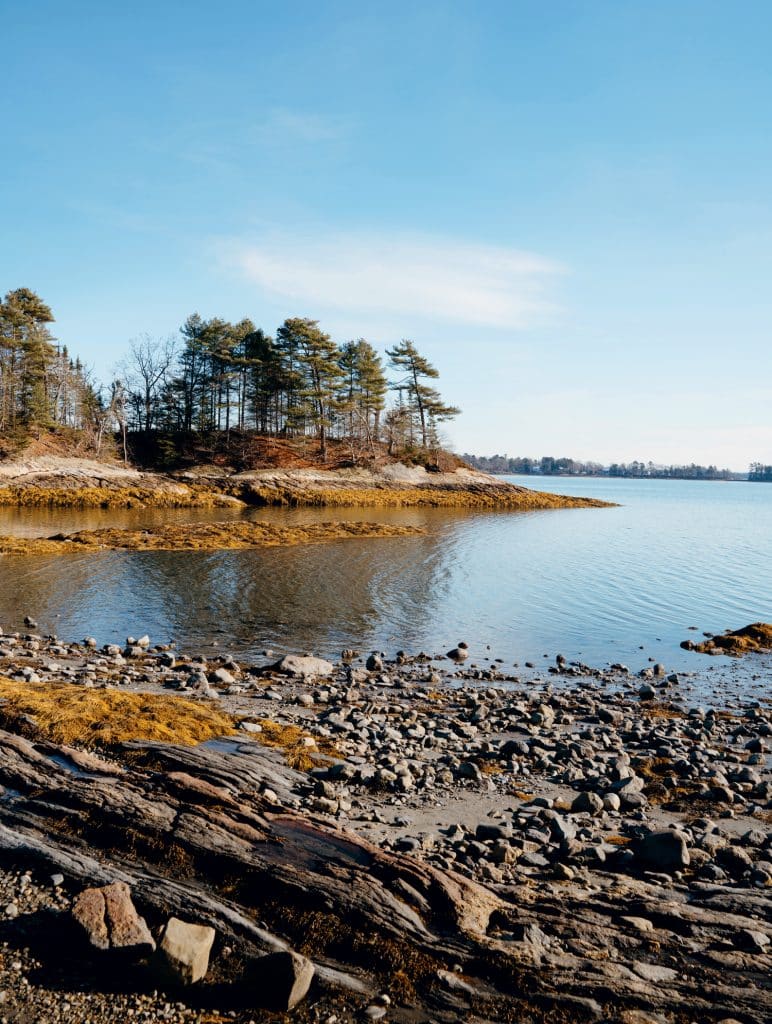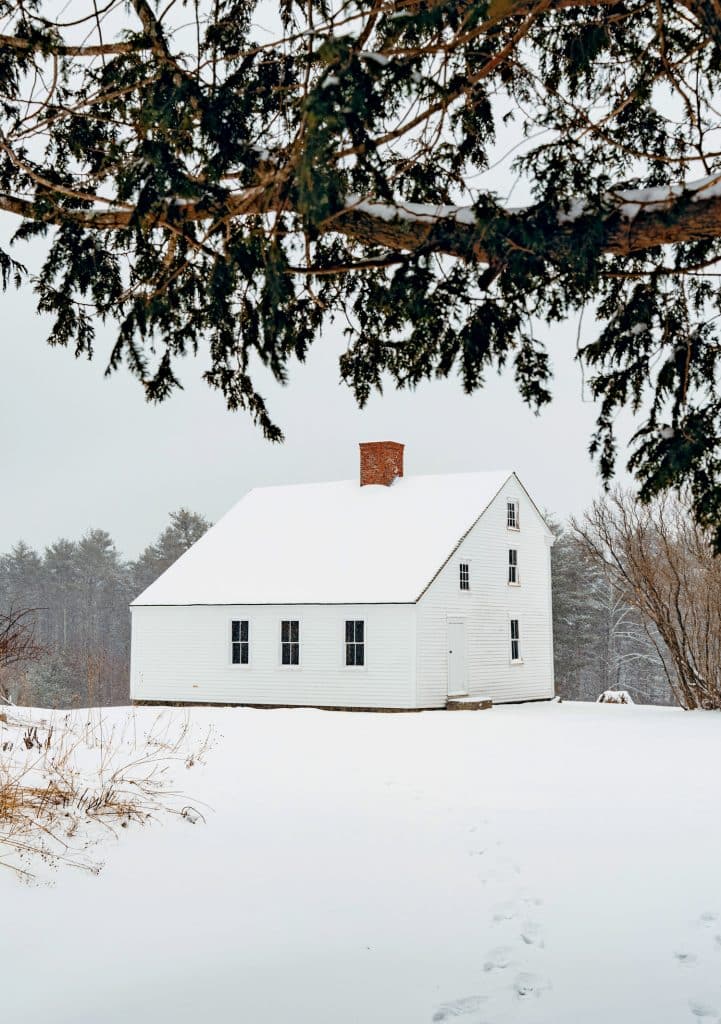Holiday Weekend in Freeport, Maine
Welcome to Freeport, Maine, where one-stop holiday shopping can be a welcome outlet, too.

Coffee By Design | Portland, Maine
Photo Credit : Katherine KeenanBy Sara Anne Donnelly
In 1771, the British cartographer Joseph Frederick Wallet DesBarres surveyed the roads in the farming village that would later become Freeport. There were only a handful, the largest of which was Post Road (now Route 1), which bisected a town center so muddy that it regularly swallowed horses to their haunches. Back then, you’d be better off getting around town by boat, skirting Casco Bay and the Harraseeket River past the modest homes of retired sea captains.
There’d be no major industry here to add sound and fury to your journey for another century, when local businessman Edmund Buxton (“E.B.”) Mallet Jr. took on the reimagining of Freeport as his personal mission, building a shoe factory, a gristmill, and a sawmill; opening a brickyard and a granite quarry; and erecting downtown housing for the hundreds of workers he brought to town to run all of it. Thus were planted the seeds of today’s Freeport—a town synonymous with shopping, the home of L.L. Bean’s flagship store, and one of America’s most visited retail destinations.
But modern-day Freeport still hangs onto its early, off-the-beaten-path beginnings. Its population of roughly 9,000 mostly resides in the countryside; talk to locals here, and you might get an eye roll when the subject of downtown comes up. Too busy, they’ll say. Too commercial. For decades, downtown has been the price Freeporters pay for the solitude they get to enjoy everywhere else. Recently, though, this divide has begun to close, thanks in part to efforts by the town and local advocacy groups to fill commercial vacancies with locally owned spots showcasing the area’s rich crop of artists, chefs, and craftspeople.

Photo Credit : Hannah Hoggatt

Photo Credit : Hannah Hoggatt

Photo Credit : Hannah Hoggatt
There may be no better time to enjoy this nascent coming-together than at one of Freeport’s biggest events, the annual Visit Freeport’s Sparkle Celebration, which transforms downtown into a winter wonderland featuring thousands of white string lights, a full slate of free events, a talking Christmas tree, and, yes, lots of deep discounts for shoppers. At the same time, L.L. Bean’s season-long Northern Lights event—which overlaps with the 10-day Sparkle Celebration—draws visitors to the retail giant’s Freeport campus with attractions like a model train village, Santa and real (!) reindeer, and much more.
As a bonus, visitors can easily spend their days buying local without ever needing to stray far from Main Street—and the same goes for where they sleep. A handful of Victorian-era inns within walking distance of downtown offer a taste of Freeport’s history alongside modern-day amenities. One standout is the 1888 Brewster House Bed & Breakfast, run by partners Dave Noel and Kelleigh Dulany. Noel’s former life as a chef in New York City means dining is taken seriously here: Your multicourse breakfast might include maple syrup made from trees on the property, and sea salt that Noel harvested from a nearby bay.

Photo Credit : Hannah Hoggatt

Photo Credit : Hannah Hoggatt
A few blocks down the street, the 1779 Jameson Tavern is a good choice for lobster stew, but there are also plenty of great modern eateries close by, including the Freeport Oyster Bar, Tuscan Brick Oven Bistro, and Wanderlust Juicery. While strolling downtown, check out the Meetinghouse Arts Gallery for local artwork and the Freeport Community Services Thrift Shop for quirky, affordable vintage finds. Shoppers needing a retail break can relax to live tunes amid the moody blue lights of the music lounge Cadenza, or take in special holiday events such the Parade of Lights and chocolate house decorating with local confectioner Wilbur’s of Maine.
When you’re ready to connect with Freeport’s aforementioned quiet side, there’s more than 1,700 acres of protected land in and around town, featuring walkable trails through fields and along marshes, rivers, and ocean inlets. The most popular among the outdoor spots is Wolfe’s Neck Woods State Park, which borders Casco Bay and a saltwater estuary, but for the best example of Freeport’s rural character, head to Pettengill Farm, an 1810 saltbox farmhouse on 140 acres of orchards, woods, and native gardens maintained by the Freeport Historical Society. Parking here is roadside (and in a quiet neighborhood, so please be respectful), from which a 15-minute walk down a wooded dirt road leads to a breathtaking view of the Harraseeket estuary and a single ghost-white house overlooking it.

Photo Credit : Hannah Hoggatt

Photo Credit : Hannah Hoggatt
The last full-time resident of Pettengill Farm was Mildred Pettengill, who’d grown up there with her brother, Frank. After their parents died, the siblings stayed on as subsistence farmers from 1925 onward, eschewing society and living without plumbing, electricity, or a telephone. Frank passed away in 1960, leaving Mildred on her own until she moved out a decade later. The Pettengill house is open to the public only a few times a year, and not typically during the winter, but the grounds are available to roam year-round during daylight hours, and the inaccessibility of the house during the cold months seems to suit it.
To anyone peering through its cloudy old windows, the Pettengill home might seem frozen in a time when Freeport was known solely for its wild inlets and hideaway woods, places just begging you to disappear into. It’s a reminder of the reclusive character that still exists in this most commercial of towns, if you know where to find it.
Freeport’s 2024 Sparkle Celebration will be held 12/6–12/15; for event details, go to sparklecelebration.com. L.L. Bean’s Northern Lights runs 11/22–12/29; for more information, go to llbean.com.







